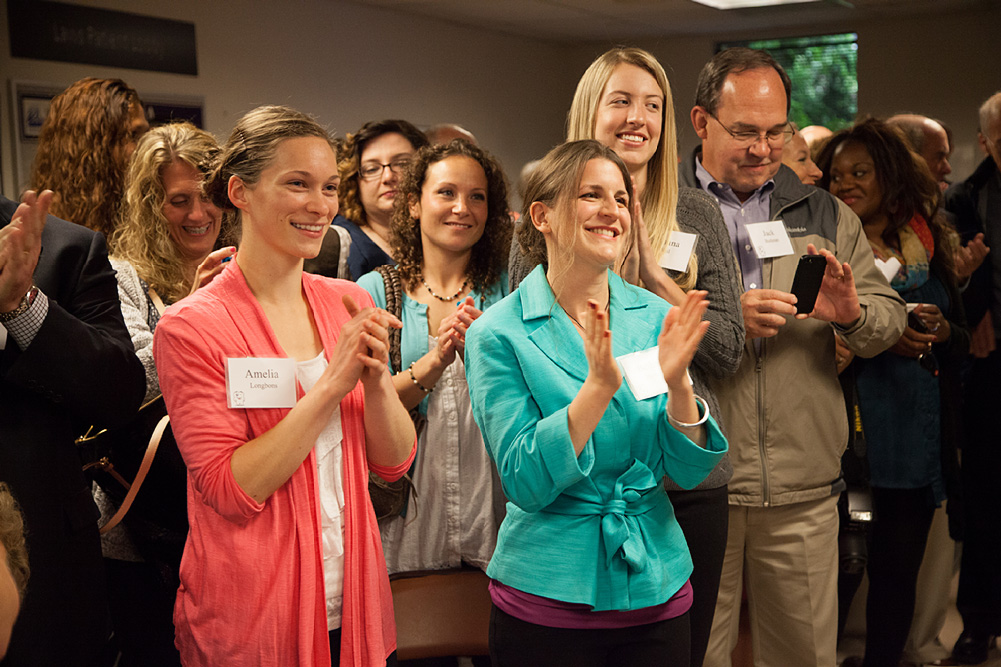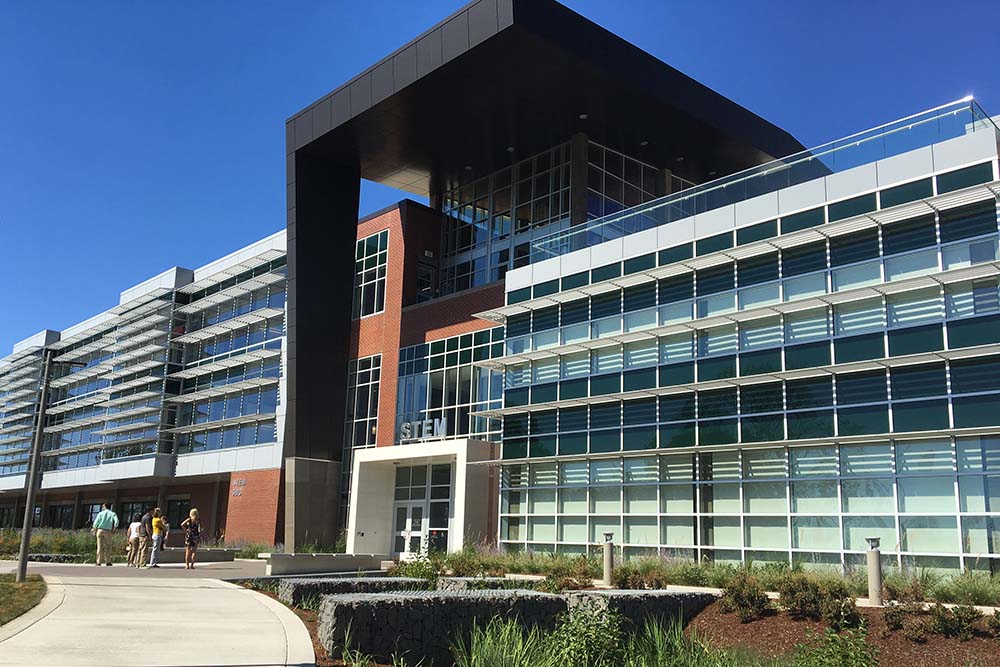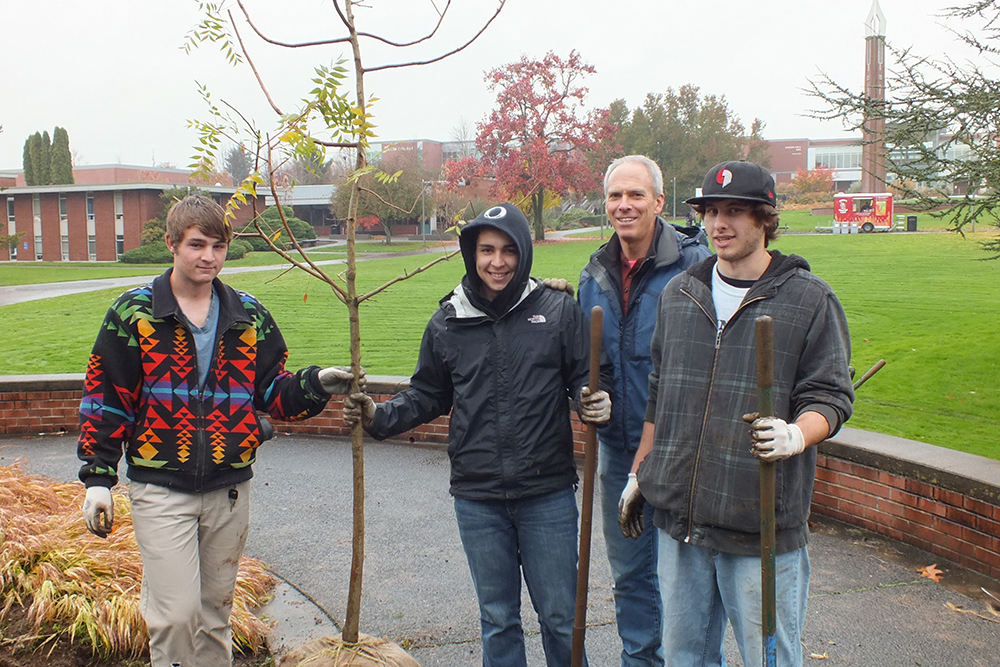
A crowd applauds the ribbon cutting of the new Firstenberg Family Dental Hygiene Education and Care Center.
The Firstenburg Family Dental Hygiene Education and Care Center officially opened with the cutting of a ribbon during a ceremony on June 17, 2014. About 75 guests joined President Robert K. Knight, dental faculty and students, Clark College trustees and Clark College Foundation board of directors to thank individuals, foundations and groups that provided funding for upgrades and new equipment.
Knight thanked the dental faculty, staff and students for doubling up on lab time and dedicating themselves to the refurbishing process. He noted that schedules were extra demanding—some classes ran from 7 a.m. to 10 p.m.—because of space restrictions.
At $1.5 million, The Firstenburg Foundation provided the lead gift for the care center. Knight noted how The Firstenburg Foundation is an example of partnerships that make Clark County and Southwest Washington a better place to live and work.
“The Firstenburg Foundation is supporting enhancements to a facility that helps our students get the experience of working in a modern dental setting. Our students, in turn, are sought-after to fill dental hygiene jobs in the region and beyond. The Firstenburg Foundation, therefore, has a direct impact on the health and welfare of our region and on Clark’s ability to maximize student learning,” he said.
Bill Firstenburg said his father was a stalwart supporter of Clark College and would have been proud of the new facility.
“Some would have called him conservative, but he didn’t mind spending money if he got value out of it. You’ve got value here to the community. The Dental Hygiene program in particular, gives support and care to those who can’t afford it,” he said.
Dental student and All-Washington Academic nominee Amelia Longbons ’14 said an important lesson she learned was the overall health effects proper dental care has on society. “Dental hygiene is about prevention and attaining and keeping good health. This facility helps students learn so we can help improve the health of the community.”
Blake Bowers, the dean of Business and Health Sciences, said Clark’s Dental Hygiene department and its Clark County partners offer $600,000 worth of free dental services to children during its annual Children’s Dental Health Day, in addition to other outreach efforts.
“There is a lot of caring and compassion that occurs within our program at all levels,” he said.
The renovations included adding six more patient chairs, new equipment and technology, paperless charting and an advanced radiology suite. The clinic now complies with federal patient privacy and confidentially requirements so that they can continue to serve thousands of community members.
Nearly $3.3 million in donations from a variety of entities—including The Firstenburg Foundation, Roy and Virginia Andersen Endowment, M.J. Murdock Charitable Trust, John A. and Helen M. Cartales Foundation and many others—made the renovations possible.
Upgrades were necessary in order for Clark to keep pace with the demand for workforce readiness and federal patient privacy rules in the dental hygiene field.
The Oregon-based company, A-dec, built custom-made work stations including modular chairs, cabinets, lights and computer monitor mounts for the space.
Clark’s Dental Hygiene program provides education and access to oral health care to low-income residents. The clinic fills 3,200 appointments for 2,000 patients annually. Students serve the community by participating in oral health programs in area schools and caring for patients at the Free Clinic of Southwest Washington, Clark County Skills Center, and Share, a Vancouver-based homeless service.
See more photos on Flickr
A version of this story originally appeared on the Clark College Foundation website.
Photos: Clark College/Jenny Shadley



